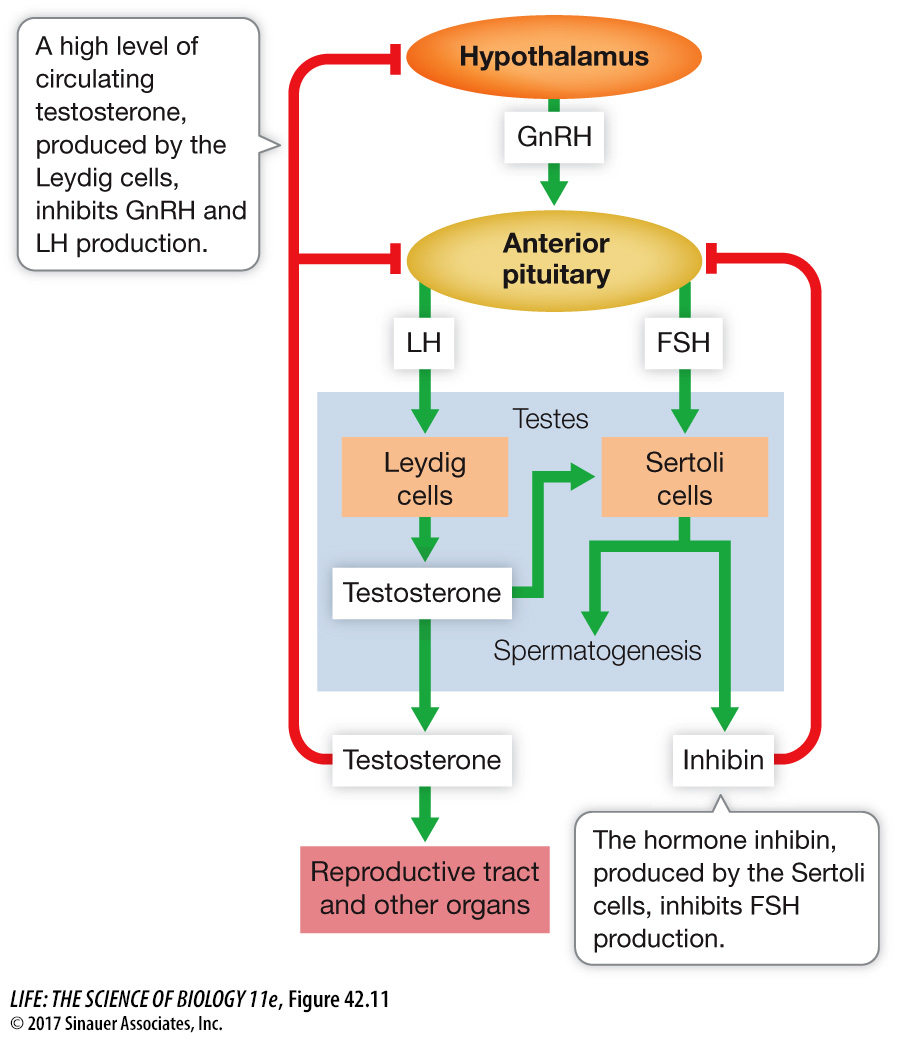Male sexual function is controlled by hormones
903
Spermatogenesis and maintenance of male secondary sexual characteristics such as facial hair and a deep voice depend on testosterone produced by the Leydig cells of the testes. As described in Key Concept 40.3, increased production of testosterone at puberty results from an increased release of gonadotropin-

Increased testosterone in pubertal boys causes the development of pubic and facial hair, a deeper voice, enlarged genitals, and an increased growth rate. Testosterone also promotes increased muscle mass and maturation of the testes. Continued production of testosterone after puberty is essential for the maintenance of secondary sexual characteristics and the production of sperm.
Spermatogenesis is controlled by the influence of FSH and testosterone on the Sertoli cells in the seminiferous tubules. The Sertoli cells also produce a hormone called inhibin that exerts negative feedback on the anterior pituitary cells producing and secreting FSH.